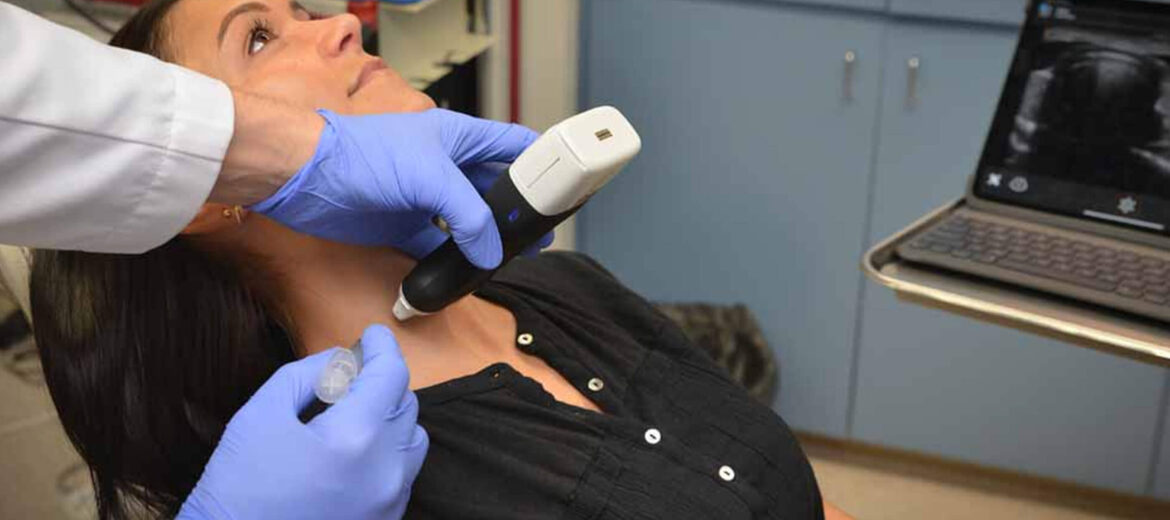When it comes to diagnosing diseases, particularly cancers, accurate and efficient tissue sampling is paramount. Two common methods for this are core biopsy and fine needle aspiration.
Both techniques are minimally invasive and take samples from suspicious areas. However, they are different in how they work, their uses, and what they can diagnose. So, knowing these differences helps patients and healthcare providers choose the best method for each situation.
What Is Core Biopsy?
A core biopsy is a procedure that uses a large, hollow needle to take a cylindrical sample of tissue called a “core.” This method provides a good amount of tissue, which helps doctors see its cells and structure to make an accurate diagnosis.
The procedure is usually done with local anaesthesia, and doctors may use imaging techniques like ultrasound, mammography, or CT scans to guide the needle to the exact spot on the lesion. Doctors commonly use core biopsies when they need to analyse tissue in detail, such as for diagnosing breast lumps, liver diseases, or certain cancers.
Advantages of Core Biopsy
- Detailed Tissue Architecture: The core sample includes both cells and the tissue structure, enabling pathologists to analyse the relationship between cells and their surrounding environment.
- Higher Diagnostic Accuracy: Core biopsy is often preferred for conditions that require detailed histological analysis, such as invasive cancers or complex tissue abnormalities.
- Multiple Uses: It is suitable for both benign and malignant conditions and allows for immunohistochemical staining, which can provide further diagnostic insights.
Limitations of Core Biopsy
- Invasiveness: While minimally invasive, it is more invasive than fine needle aspiration (FNA) and may cause slight discomfort or bruising.
- Longer Procedure Time: The procedure can take longer due to the need for precise imaging and tissue extraction.
What Is Fine Needle Aspiration (FNA)?
Fine needle aspiration, often abbreviated as FNA, uses a thin, hollow needle to extract cells or fluid from a lesion. Unlike core biopsy, this technique focuses on collecting individual cells rather than an entire tissue structure.
FNA is typically performed as an outpatient procedure under local anaesthesia. It is commonly used for evaluating thyroid nodules, lymph nodes, and superficial masses in areas like the breast or salivary glands.
Advantages of Fine Needle Aspiration
- Minimally Invasive: FNA involves a smaller needle and generally causes less discomfort, making it a less invasive option for patients.
- Quick Procedure: The process is swift, often taking only a few minutes, and does not require significant preparation or recovery time.
- Cost-Effective: FNA is less expensive compared to core biopsy, making it a preferred initial diagnostic test for many conditions.
Limitations of Fine Needle Aspiration
- Limited Diagnostic Information: Fine needle aspiration (FNA) only collects cells, not the surrounding tissue. This means it may not offer enough information to tell the difference between benign and malignant lesions in some cases.
- Higher Risk of Indeterminate Results: When tissue architecture is missing, it can lead to unclear results. This may require additional tests, such as a core biopsy.
When to Choose Core Biopsy
A core biopsy is often suggested when doctors need a detailed tissue sample for diagnosis. It is especially important when previous tests, like fine needle aspiration (FNA), did not provide clear results. A core biopsy is the best choice in certain situations, including:
- Core biopsy is the gold standard for evaluating breast lumps due to its ability to determine the type, grade, and invasiveness of the cancer.
- When assessing organ dysfunction or suspected malignancies, core biopsy provides comprehensive tissue analysis.
- These conditions require detailed histopathological evaluation, which is not possible with FNA.
When to Choose Fine Needle Aspiration
A Fine Needle Aspiration (FNA) is often the first test used to diagnose conditions that are easy to reach and shallow. It is suitable for cases that do not need detailed tissue analysis. FNA is commonly used in the following situations:
- FNA is the preferred initial test for evaluating thyroid abnormalities due to its simplicity and effectiveness.
- Suspicious lymph nodes, particularly in cases of infections or metastases, are often assessed using FNA.
- The aspiration of cysts or fluid-filled lesions is efficiently done with FNA.
The Epilogue
The choice between core biopsy vs. fine needle aspiration is a critical decision in diagnostic medicine. Both techniques offer unique advantages and limitations, with core biopsy providing detailed tissue analysis and FNA excelling in its minimally invasive approach.
Understanding the differences and uses of tissue sampling procedures helps patients and healthcare professionals choose the best method for accurate diagnosis and treatment planning. The main goal of any tissue sampling technique is to quickly and accurately identify diseases, leading to better health outcomes.
If you need help with diagnostic imaging and biopsy procedures, choose Queensland Radiology Specialists. They have an experienced team that uses advanced imaging technology to perform core biopsies and fine needle aspirations carefully and accurately.
So, contact them today to find out more about their services and how they can meet your diagnostic needs.



